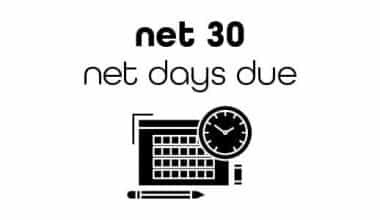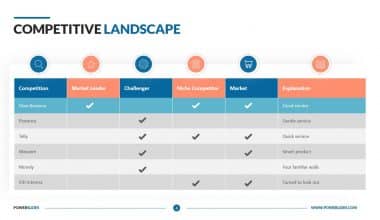One of the several marketing methods you may employ to gauge client happiness is the survey. An excellent survey can increase your company’s sales, product, or customer retention levels, depending on how you handle the results. Knowing more about your client’s demands can make it easier for you to offer a better customer experience. We go over the best practices to create a successful customer satisfaction survey in this post and provide sample questions and answers to think about.
What is a Customer Satisfaction Survey?
Research that gauges a person’s perceived happiness with a good or service is known as a customer satisfaction survey. A properly filled out customer satisfaction survey offers answers to several queries your business may have regarding the goods they manufacture. You can identify your inactive leads via a survey. Typically, a survey is not sent to a lead until the sale is complete. Data in a format similar to that seen in surveys is provided by the actions that your customer does.
You can learn more about how well a solution fits your customers’ demands by conducting a survey. A customer satisfaction survey also has the following additional advantages:
- Engagement
- Market research
- Lead nurturing
- Greater targeting
When Should You Send Customer Satisfaction Surveys?
- As soon as possible after an interaction with customer support
- After some time (the amount of time will vary based on your product or service) has passed after a customer’s first purchase,
- Examine how customer satisfaction changes throughout the customer journey at various points in the customer lifecycle.
Another crucial decision to make is the timing of your customer satisfaction survey distribution. The quality of the data is also influenced by when the inquiry is posed. Although there are various methods for carrying out these surveys, if you talk to enough professionals, you’ll hear this error repeatedly: Most businesses wait too long to inquire.
When it comes to customer happiness, businesses may be tempted to use “the autopsy approach”—waiting until after an event to determine what went wrong with a client. Instead, questions should be made of clients while their comments are still relevant. To obtain various perspectives on the customer experience at various life cycle stages, it is ideal to implement customer satisfaction surveys at various times.
As a result, your initial instruction is to coordinate your survey points with the value points that you want to gauge in the customer experience. Your ability to create a detailed picture of the consumer experience increases as you measure more touchpoints.
The type of survey you are doing will also affect when you send it out. To capture the experience while it is still recent, we specifically advise sending CSAT surveys as soon as possible after a customer support session.
Customer Satisfaction Survey Best Practices
Getting truthful and precise answers from your consumers is essential for the effectiveness of your customer satisfaction data. Therefore, it should come as no surprise that the majority of issues we encounter with customer satisfaction surveys center on obtaining truthful answers from respondents:
- No matter what you do, research has proven that a small percentage of respondents will always make false statements on your survey, particularly if the questions are on the three Bs: behavior, beliefs, or belonging.
- In addition, people occasionally provide incorrect answers wholly out of ignorance. Numerous publications have emphasized that, particularly when done via survey, predicting future intentions (such as whether or not they’ll buy from you again) may be rather challenging.
Thankfully, research also provides answers to these recurring issues with surveys. One useful resource to create and structure a customer satisfaction survey that helps minimize these issues is joint research by Survey Monkey and the Gallup Group.
How to Create a Customer Satisfaction Survey
Let’s examine the study’s key findings below to help you understand how to create your customer satisfaction survey.
#1. Make it simple and brief
Finding the shortest way to ask a question without losing its meaning is your major objective. You must also eliminate superfluous wording from your queries to reduce the character count.
However, overall survey length is still crucial for preserving low abandonment rates. Consider the last time you eagerly spent 30 minutes filling out a questionnaire. Most likely, it has never occurred.
#2. Just raise issues that advance your objectives.
Be harsh when removing pointless questions from your surveys, in other words. Every question you include should have a clear purpose and a compelling justification for being there. Otherwise, put it on the cutting room floor.
For instance, depending on the goal of the survey, it might not be important how a client discovered your website. Don’t inquire as to how they learned about you if that is the case. Do you need to know the name of a customer? Do not inquire if not.
#3. Create intelligent, in-depth questions
Open-ended questions that let clients express their true thoughts on the page will yield some of your most insightful feedback, despite the temptation to remain with multiple-choice tests and scales.
A large text box associated with the first question, however, is what makes a survey the most daunting. It’s advisable to create your customer satisfaction survey with a few quick questions to establish a sense of progress. Give those who have completed the survey and reached the final questions the chance to elaborate.
#4. Only raise one question at a time.
We’ve all been bombarded with a long list of questions like, “How did you locate our site? Are you aware of what our product accomplishes? If not, why not? You can start to feel as though you’re being questioned by someone who won’t let you finish your thoughts. Give individuals enough time to consider each question in detail if you want thoughtful responses.
If respondents are bombarded with too many questions at once, they will only give you half-hearted answers to get through to the end, if they don’t leave you before that. Instead, simplify things by focusing on one core idea at a time.
#5. Consistency of rating systems
When the environment starts to change, common survey scales can become complicated to understand.
Here’s an example: You are instructed to select your response from 1 to 5 for the initial poll questions, where 1 is “Strongly Disagree” and 5 is “Strongly Agree.”
But later on in the survey, you are required to rate the significance of several items. The issue: Although 1 is now designated as “Most Important,” you always used 5 as the acceptable response to the earlier questions. That is very perplexing. How many people accidentally provided incorrect answers because they were unaware of this change?
#6. Steer clear of rhetorical inquiries.
You won’t receive useful or accurate feedback from questions that steer respondents toward a particular response owing to biased wording. This is a blatant example of allowing pride in your product to get in the way of posing an intelligent query. The more objective question, “What do you think of the most recent SurveyMonkey upgrades?” is preferable.
#7. Employ yes-or-no questions.
Try to formulate questions with straightforward answers as either yes or no choices wherever possible. These closed-ended questions are excellent starters because they are often simpler for customers to evaluate and complete, according to the Survey Monkey study.
#8. Be specific and reject generalizations
Unless your customer satisfaction survey is tailored to a certain group of people, you’re likely to encounter issues when you design questions that assume a consumer is aware of something. We advise avoiding using industry acronyms, buzzwords, jargon, or references in your inquiries because this is one of the main causes.
#9. Consider your timing
It’s interesting to note that according to the Survey Monkey data we mentioned earlier, the highest survey open and click-through rates, respectively, were on Monday, Friday, and Sunday. Your best bet is to look for survey takers early in the week or to wait until the weekend because there was no noticeable difference between the quality of responses received on weekdays vs weekends.
At most once every quarter, many businesses create a customer satisfaction survey once a year. You shouldn’t have to wait 90 days to learn if a customer is dissatisfied, so while it’s fantastic, it’s insufficient to maintain a genuine pulse on customer satisfaction.
#10. Provide bonuses to survey participants
In some circumstances, encouraging customers to participate in your survey makes sense: Several pieces of evidence suggest that incentives can boost survey response rates. These rewards could take the form of a discount, a gift, or an account credit.
The trick is to strike a balance between offering clients enough incentives to survey without going overboard. We frequently suggest credits or free trials in place of irrelevant gifts or significant discounts because your incentives need to be something your brand can afford.
Examples of Customer Satisfaction Survey Questions
Create a customer satisfaction survey, and make sure to format the questions so that the answers are as simple as yes or no. Here are a few instances:
#1. Would you suggest this product to a friend or family member?
Your leads should provide you with audacious answers. the queries may come across as forthright, which may encourage the respondent to do the same. Encourage them to be frank about their emotions and thoughts.
#2. Do you intend to buy from this company in the future?
Think about what it would mean to directly know a lead’s potential for future purchases. You can narrow down your prospects by asking them questions like this one. Create a plan for upcoming campaigns or marketing strategies using the information you learn from the answers to this question.
#3. Did you receive any assistance while making this purchase?
You can use this query to assess the effectiveness of your resources. Your system may deal with people directly. Even if you use automation, you still need to evaluate how well each processing stage is working. Find ways to improve the customer experience.
#4. How important is delivery time?
If your business delivers its goods, keep in mind that some clients might have a pressing need for prompt delivery of their orders. You could get confirmation from others that delivery time is unimportant. Your leads’ urgency tells you how quickly you need to respond.
#5. How fast and easy was the payment process?
By concentrating on purchasing, you can skip right to the crucial parts. What your most recent lead experienced will be shared by all upcoming buyers. See if you can enhance that experience right up to the buying stage.
What Are the 4 Types of Customer Satisfaction Survey?
The following are the four most typical types of customer satisfaction surveys:
- Net Promoter Score (NPS)
- Customer Satisfaction Score (CSAT)
- Customer Effort Score (CES)
- Product-Market Fit (PMF)
What Are 5 Good Survey Questions?
How, why, who, when, and what are five fundamental questions that aren’t as frequently asked as the more well-liked ones you include in your survey. But they ought to.
How Do You Ask for Customer Satisfaction Survey?
- Outstanding topic line.
- personalizing email invitations
- Inform them of the purpose of the invitation.
- Don’t brag about how fantastic you are.
- Describe the survey’s objective.
- Give a timeframe that is reasonable to expect.
- Give them a place to voice their inquiries.
- Display the survey link to them.
What Does a Customer Satisfaction Survey Consist Of?
Several basic components are often included in a customer satisfaction survey when you intend to create one, although the precise questions and structure may vary depending on the business and its aims. These consist of:
- Demographic information
- Overall satisfaction rating
- Specific product or service feedback
- Customer service feedback
- Likelihood to recommend
- Open-ended feedback
What Are Five 5 Methods You Can Use to Measure Customer Satisfaction?
How to measure customer satisfaction survey:
- Customer surveys.
- Focus groups and advisory boards.
- Social media.
- Response rates.
- Churn.
What Question Is the Most Basic Customer Satisfaction Survey?
Questions for Customer Satisfaction Surveys
- How would you rank the product’s value for the money?
- Kindly let us know a few things we could improve.
- What emotions do our goods or services elicit in you?
- How pleased are you with the buying process?
- Do you consider yourself a devoted consumer of our product?
Tips to Create a Customer Satisfaction Survey
Here are some pointers to assist you create a successful customer satisfaction survey.
- Be upfront and truthful. Maintain your attention on what you require from the respondent. Shorten your inquiries and make it clear what you want the respondents to say.
- Be truthful when describing the goal of your survey. Customers are more likely to provide sincere responses when you are honest throughout the entire survey process.
- Acknowledge your errors. You must explain your cause to a respondent to elicit sympathy. To start, identify the areas where your company wants to make improvements. A respondent may become more eager to assist as a result.
- Talk of future discussions. Inquire as to whether and how you can keep in touch with your customers in the future. Honesty about how you intend to keep in touch with them can help you preserve your ethical integrity.
Conclusion
A customer satisfaction survey is a crucial first step in getting client feedback on their interactions with your company. To create an effective customer satisfaction survey, consider the following:
Set clear goals. Select a survey format, Choose your inquiries, Select a ranking system, Embrace open-ended questions, and Analyze your survey’s results after testing it. You may create a customer satisfaction survey by following these instructions that offer insightful information about your customers’ experiences and aid in business improvement.
- ENTERPRISE APPLICATION: Everything You Need to Know About EAS
- CUSTOMER EXPERIENCE OFFICER: What Is It & What Do They Do?
- WHAT IS INTERCULTURAL COMPETENCE: Meaning, Importance & How to Increase It
- WHAT IS CONSUMER BEHAVIOR? Types, Characteristics & Theory
- SURVEY APP: Top Best Survey Apps for Your Business 2023






